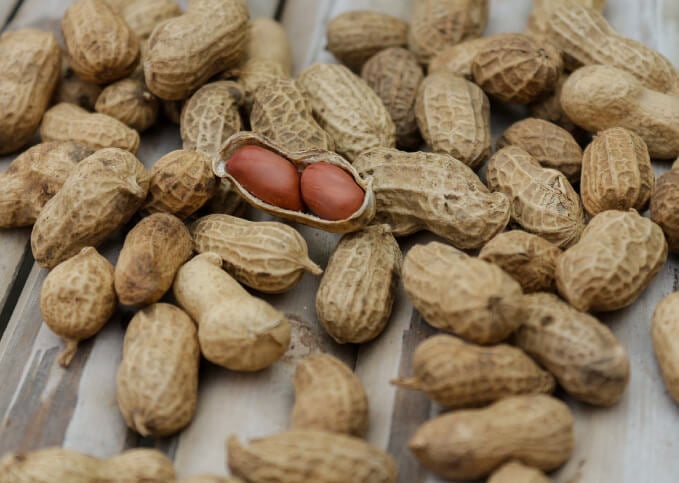Harmful Effects of Too Little Fat

High-fat diets contribute to a host of serious conditions, including type 2 diabetes, heart disease, and obesity. By contrast, what are the harmful effects of too little fat? Limiting fat severely, however, is not the answer. Fats allow your body to absorb nutrients, fuel your muscles during exercise and promote satiation, and consuming too little fat is risky. The 2010 Dietary Guidelines for Americans recommends a diet containing 20 to 35 percent fat, and advises choosing nutritious sources, such as nuts and olive oil, most often. To determine whether your fat needs are being met, seek guidance from your doctor or dietitian.
Harmful effects of too little fat
1) Heart Problems. Unlike saturated fats, found in animal products and fried foods, healthy fats promote positive cardiovascular health. Omega-3 fatty acids, for example, provide protection from hypertension, cholesterol problems and heart disease. Americans tend to lack these heart healthy fats, which raises risks for heart-related problems. To lower your risk for heart disease, eat fatty fish, such as salmon, albacore tuna, mackerel or sardines, at least twice per week. Vegetarian omega-3 sources include flaxseeds, flaxseed oil and walnuts.
2) Vitamin Deficiencies. Because fats help your body absorb and utilize the fat-soluble essential vitamins A, D, E and K, (4 of 13 essential vitamins that your body needs but can’t produce) consuming too little fat makes way for vitamin deficiencies. If you develop a vitamin A deficiency, you can experience very dry skin, slow bone growth, and night blindness. Without enough vitamin D, which helps your body absorb calcium, your bones can become brittle and weak. Your immune system can suffer from too little vitamins A and E, and without enough vitamin K, your blood cannot clot properly. To avoid these risks, consume fat as part of a balanced diet containing a variety of healthy foods, such as fruits, vegetables, lean protein sources and whole grains.
3) Excessive Appetite. Harmful effects of too little fat can also interfere with appetite control . In a study published in “Obesity” in 2010, 270 obese adults consumed a diet moderate or low in fat – consuming too little fat is not healthy for weight loss. The dieters who consumed the moderate-fat diet reported significantly fewer food cravings and bothersome hunger pangs compared to the low-fat dieters, whose diets were also higher in starch and lower in protein. To better manage your appetite, incorporate fat into balanced meals and snacks. Because fat sources are dense in calories, modest portions per meal, such as 1 to 2 tablespoons of nuts or full-fat salad dressing, are typically enough.
4) Mood Problems. Your brain requires a variety of nutrients, including fats, to function properly. Fats help the brain produce feel-good brain chemicals, such as serotonin and dopamine. They also increase your ability to concentrate, staving off foggy thinking and low moods. An omega-3 fatty acid deficiency can cause mood swings and depression, according to the University of Maryland Medical Center. In severe cases, low-fat diets have been linked with suicidal tendencies. Ingesting too little fat as part of a weight-loss diet can also cause increased stress, anxiety and low-self esteem. The above are harmful effects of too little fat. Eating enough fat as part of a diet sufficient in calories and other nutrients guards against these risks.
How can one identify good fats vs. Bad fats?
When trying to distinguish between good fats and bad fats, it’s crucial to know which types can benefit your health and which could be harmful. Here’s a straightforward guide to help you identify and choose the healthier options:
Good Fats are Monounsaturated and Polyunsaturated Fats.
Sources: These beneficial fats are typically found in plant-based oils like olive, canola, and sunflower oil. Nuts, seeds, and fish are also rich in these heart-healthy fats.
Benefits: They help increase the levels of good cholesterol (HDL) and reduce the risk of cardiovascular diseases.
Bad Fats: are Saturated and Trans Fats
Sources: Saturated fats are mainly found in animal products such as red meat, whole-fat dairy products like butter and cheese, and certain tropical oils like palm oil. Trans fats are prevalent in baked goods, fried foods, and anything containing “partially hydrogenated” oils.
Risks: These fats can raise bad cholesterol levels (LDL), potentially leading to heart disease and stroke. It’s advised to consume them sparingly.
Incorporating fats into your diet is necessary, but choosing the right types and amounts is key. Opt for foods rich in monounsaturated and polyunsaturated fats while limiting those high in saturated and trans fats. Remember, moderation is essential – even when consuming the good fats. By understanding these differences and making informed choices, you can maintain a balanced and heart-healthy diet.
References:
- University of Maryland Medical Center: Omega-3 Fatty Acids
- Obesity: Change in Food Cravings, Food Preferences, And appetite During a Low-Carbohydrate and Low-Fat Diet
- Psychology Today: The Risks of Low-Fat Diets
- National Eating Disorders Association: Know Dieting: Risks and Reasons to Stop